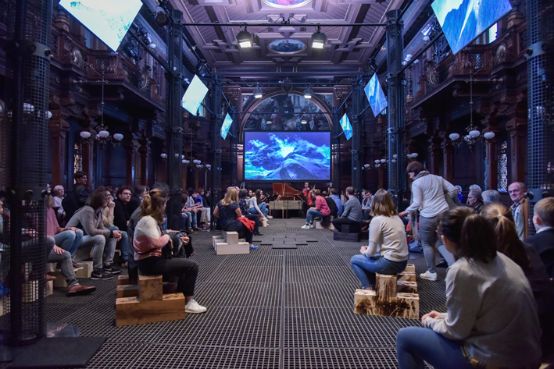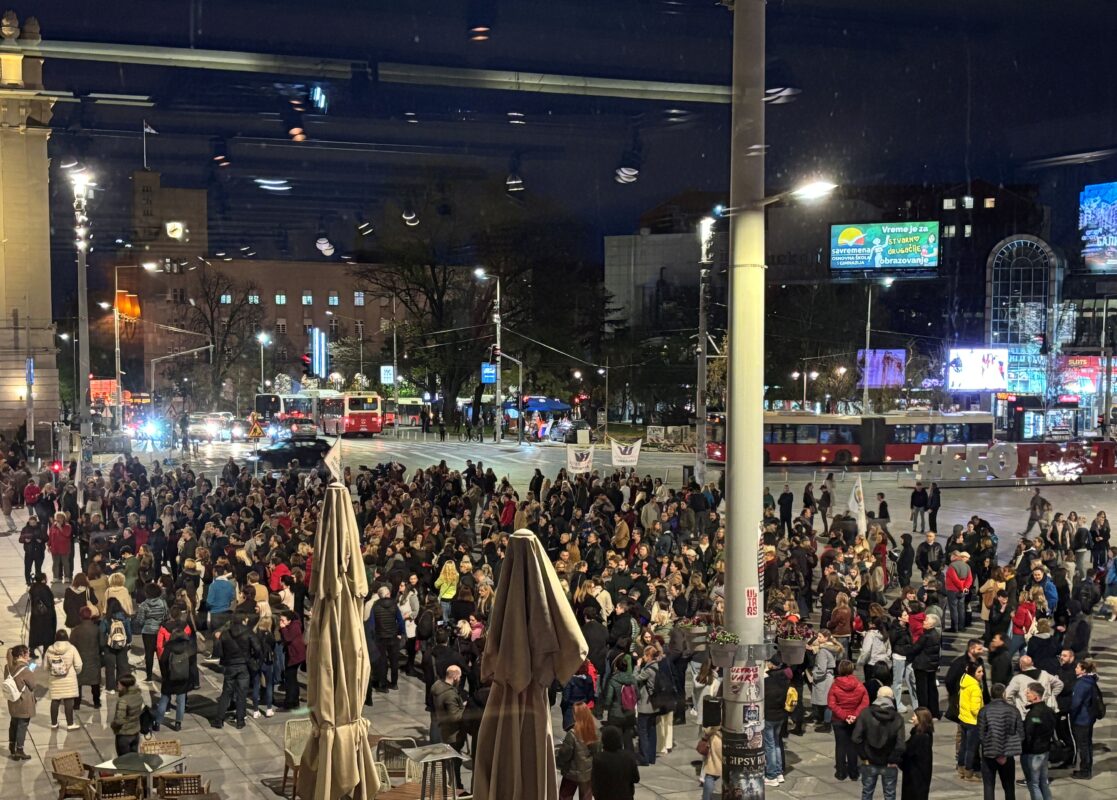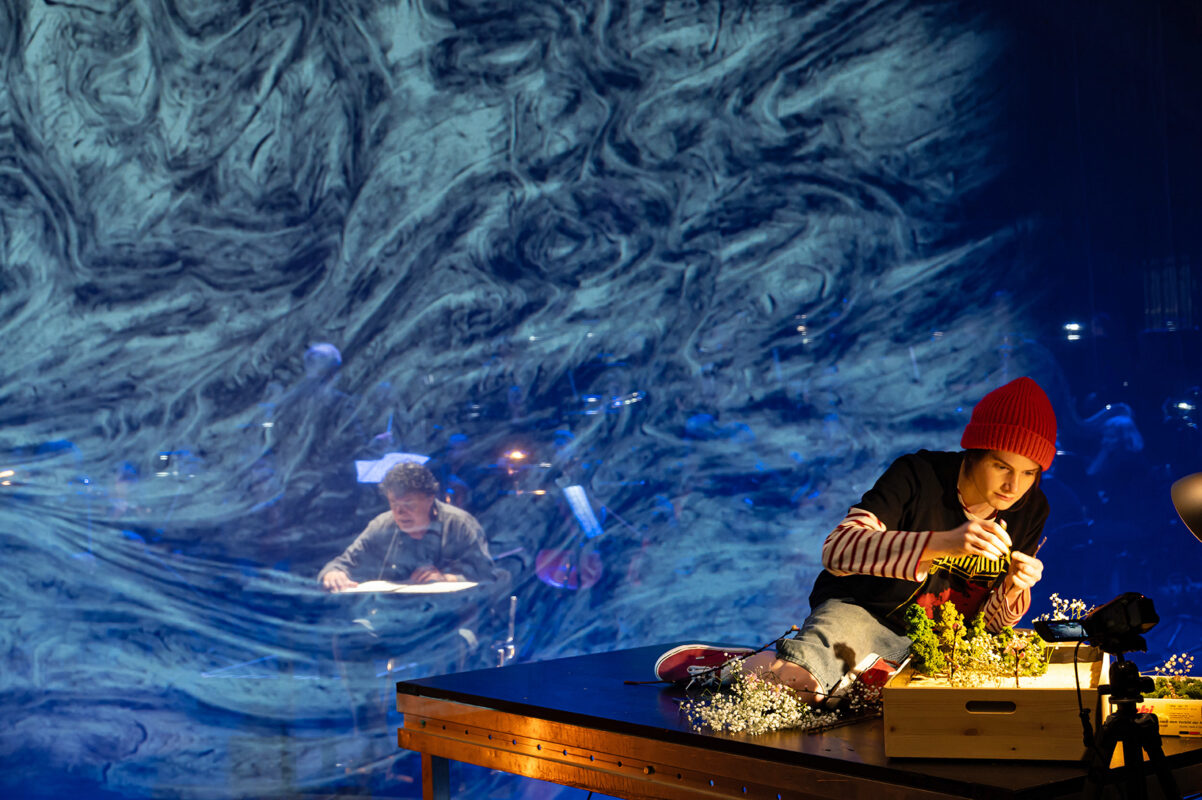An experimental laboratory
David Philip Hefti's "Media nox" and the multimedia music theater "Castor&&Pollux" were performed for the first time.

"How do we want to live?" is the motto of this year's Heidelberg Spring (March 16 to April 14). It is the final part of the Enlightenment trilogy, which in previous years dealt with the "foreign" and the "own species". In addition to orchestral concerts, chamber music and recitals, the festival also includes its own master classes such as the Chamber Music Academy led by Igor Levit and Thomas Hampson's Lied Academy, the artistic results of which can be heard in the festival program. Artistic Director Thorsten Schmidt is looking to the future, especially in the so-called LAB, which brings together representatives of different arts and experiments with new concert and music theater forms. With the world premiere of Castor&&Pollux the dignified, wood-panelled old auditorium of Heidelberg University presented a "multimedia music theater for ensemble, video art and 4D sound", as the 70-minute evening is called. That at least sounds very innovative and like a new listening experience. A grid floor has been installed in the old auditorium. Some ladies therefore have to swap their heels for heels at the entrance to avoid getting stuck in the walk-in sound system. An eight-column loudspeaker construction stands in the middle of the hall. Several monitors and a large screen at the head of the hall, where the baroque ensemble The Rossetti Players under the direction of Barbara Konrad is also positioned, complete the setting. The eight members of the vocal ensemble have mingled with the audience, some of whom are seated on wooden beams.
Faceless myth adaptation
The evening is on the trail of the eternal desire for immortality and seeks to build a bridge between the ancient myth of Castor and Pollux and artificial intelligence, between the baroque sounds of Jean-Philippe Rameau's opera of the same name and the live electronics of Lukas Rehm, who also shot the videos for the evening. Unfortunately, the production (Lisa Charlotte Friederich: libretto and direction; Jim Igor Kallenberg: dramaturgy) does not live up to its promise. It gets tangled up in the many references it tries to spin. Above all, it creates too little musical-theatrical presence. Even the beginning is wasted when Natalie Pérez tells the entire story of the human-divine twins Castor and Pollux in a matter-of-fact way. What musical drama could have been developed from individual scenes, such as when Castor is fatally injured and has to go to the underworld, when Pollux is torn apart by longing and follows his brother to Hades for a day. Rameau's overture is only heard afterwards - initially played in a bouncy, majestic manner by the nine-piece baroque ensemble, then digitally processed and sent over the loudspeakers. The machine replaces the human. Videos of the Castor and Pollux massif in the Valais Alps flicker across the monitors, followed by statements from scientists and purely digital landscapes. The eight singers wander through the room, introduce themselves as Castor or Pollux and talk about the Heidelberg Human Brain Project, for which a human brain is being recreated as a giant computer in a four-storey building. The sung arias, duets and choruses by Rameau can create individual touching moments, but hang incoherently in the room. In between, Lukas Rehm's electronic music repeatedly shapes the action with billowing soundscapes, multicolored noise and thoroughly fascinating sound creations in excellent sound quality. However, there is no compelling contact between the various elements of the evening. Castor&&Pollux resembles a collage - assembled from set pieces that have too little to do with each other. The characters in this laboratory experiment remain the same until the final chorus Que les cieux, que la terre faceless and interchangeable.
Shadowy night music
David Philip Heftis Media nox for flute and chamber orchestra, on the other hand, has a very special tone. The work commissioned by the Heidelberger Frühling is the Swiss composer's third work in his four-part cycle Night watch. From the very beginning, it unfolds a special atmosphere between calm and restlessness, blurred and clear contours, tonal centers and quarter-tone ambiguities. For the flute part, which Tatjana Ruhland, principal flutist with the SWR Symphony Orchestra, models with the greatest art of differentiation, Hefti demands modern playing techniques such as multiphonics, percussive slap toungs and glissandi, which repeatedly pull the rug from under the feet. Hefti plays with timbres when the same tone is constantly remixed by the different registers. The Deutsche Radio-Philharmonie Saarbrücken-Kaiserslautern, under the sensitive direction of Jamie Phillips, also gets involved in this fragile music, which is enriched with many shades and which sometimes emerges for a moment from the twilight state into the glistening light and makes nightmarish grimaces.








